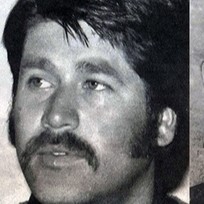
1955 - 1985
Jorge José Sagredo Pizarro
Summary
Name:
Nickname:
Viña del Mar psychopathYears Active:
1980 - 1981Birth:
August 22, 1955Status:
ExecutedClass:
Serial KillerVictims:
10Method:
ShootingDeath:
January 29, 1985Nationality:
Chile
1955 - 1985
Jorge José Sagredo Pizarro
Summary: Serial Killer
Name:
Jorge José Sagredo PizarroNickname:
Viña del Mar psychopathStatus:
ExecutedVictims:
10Method:
ShootingNationality:
ChileBirth:
August 22, 1955Death:
January 29, 1985Years Active:
1980 - 1981Date Convicted:
January 8, 1983bio
Jorge José Sagredo Pizarro was born on August 22, 1955, in Chile. As a young adult, he joined the Carabineros, Chile’s national police force, where he worked alongside Carlos Alberto Topp Collins, who would later become his partner in one of Chile’s most infamous killing sprees.
While specific details about Sagredo’s childhood and upbringing remain sparse in public records, his position as a police officer provided both access and power, two elements that he and Topp exploited during their killing spree across Viña del Mar, a coastal resort city in central Chile. The men used their uniforms, authoritative voices, and institutional knowledge to abduct, rape, and murder civilians.
murder story
Between August 1980 and November 1981, Jorge Sagredo and Carlos Topp committed a string of violent crimes in and around Viña del Mar. The pair were eventually held responsible for 10 murders and 4 rapes, all marked by brutality and apparent planning.
Victims included young couples, taxi drivers, and individuals targeted on isolated roads and in natural areas such as the Marga Marga Estuary, El Olivar trail, and the National Botanical Garden. In multiple cases, after shooting the male victim, Sagredo and Topp would rape the female companion before fleeing. At least three women were raped, including Fernanda Bohle Basso, Margarita Santibáñez Ibaceta, and Ana María Riveros Contreras.
Their methods involved stolen taxis, surprise ambushes, and execution-style killings, carried out using a firearm—later traced back to a weapon owned by Luis Gubler Díaz, a wealthy contractor with ties to intelligence forces. Though Gubler was briefly arrested, his confession (allegedly obtained under torture) was nullified, and he was released. The presiding judge and detective handling the case were later removed.
The investigation took a turn when Corporal Juan Quijada, a fellow Carabinero, recognized behavioral patterns and voice descriptions pointing to internal suspects. He confronted Sagredo directly, leading to a full confession and arrest of both Sagredo and Topp on March 8, 1982. They were officially discharged from the Carabineros just four days prior, on March 4, 1982.
The pair confessed extrajudicially, judicially, and publicly. They were convicted on January 8, 1983, and sentenced to death by firing squad, a sentence upheld by the Chilean Supreme Court on January 17, 1985.
Despite widespread belief that the men acted on orders from a shadowy "crime club" tied to Pinochet’s intelligence network, no other individuals were formally prosecuted. Even family members of victims protested the executions, suspecting a cover-up of higher-level operatives.
On January 29, 1985, Jorge Sagredo and Carlos Topp were executed by firing squad in Quillota Prison. As was standard, they were tied to chairs, hands bound, and red targets placed over their hearts. The execution took place under the direct orders of dictator Augusto Pinochet, who denied both men presidential clemency.